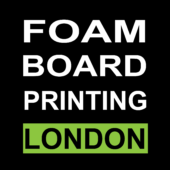Foam board airplanes are a popular choice for hobbyists and model enthusiasts due to their lightweight nature, affordability, and ease of construction. Foam board, consisting of a layer of foam sandwiched between two sheets of paper, provides an ideal medium for creating durable and functional model airplanes. Here’s a step-by-step guide to help you build your own foam board airplane.
Materials Needed
- Foam Board: Choose a foam board with the right thickness (typically 5mm is ideal).
- Craft Knife or Box Cutter: For precise cutting of the foam board.
- Cutting Mat: To protect your work surface.
- Ruler or Straight Edge: To guide your cuts.
- Hot Glue Gun: For assembling the foam board pieces.
- Pencil: For marking your cuts.
- Scissors: For finer cutting or trimming.
- Sandpaper: To smooth out edges.
- Tape: For reinforcing the structure.
Step-by-Step Instructions
1. Design and Planning
- Research: Start by looking up different airplane designs. Consider factors like wingspan, body length, and tail size.
- Blueprints: Draw or print out the blueprints of your chosen design. Make sure all measurements are accurate to ensure proper balance and flight.
2. Cutting the Foam Board
- Mark the Pieces: Using your pencil and ruler, mark the different parts of the airplane on the foam board. This typically includes the wings, fuselage (body), vertical stabilizer, and horizontal stabilizer.
- Cutting: Carefully cut out the pieces using a craft knife. Ensure your cuts are smooth and precise, as jagged edges can affect the airplane’s aerodynamics.
3. Assembling the Airplane
- Fuselage: Begin by assembling the fuselage. Use the hot glue gun to attach the pieces together, following the design.
- Wings: Attach the wings to the fuselage. The wings should be glued at the center of the fuselage for balance. Reinforce the attachment with tape if necessary.
- Tail: Glue the vertical and horizontal stabilizers at the back of the fuselage. The vertical stabilizer should be perpendicular to the fuselage, while the horizontal stabilizer should be parallel to the wings.
4. Reinforcement and Finishing
- Sand the Edges: Use sandpaper to smooth out any rough edges on the foam board.
- Reinforcement: Use tape along the edges of the wings and fuselage to provide extra strength.
- Decorate: Once the structure is complete, feel free to decorate your airplane with paint or stickers.
Conclusion
Building a foam board airplane is a rewarding and educational hobby. It provides a hands-on experience in design, aerodynamics, and model construction. With just a few simple materials and tools, you can create a model airplane that not only looks impressive but can also take to the skies.
Whether you are a beginner or an experienced modeler, foam board airplanes offer a versatile and engaging project. Remember to start with a simple design if you are new to this hobby, and gradually challenge yourself with more complex models. With patience and practice, you can master the art of building foam board airplanes, opening up a world of creativity and fun.
